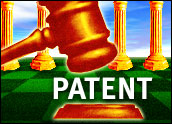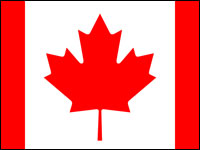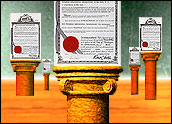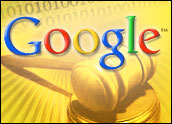
While patent practitioners are well familiar with and accepting of the phrase that patentable subject matter may include “anything under the sun that is made by man,” the U.S. District Court for the Southern District of New York recently heard arguments that may call the rationale behind that famous quote — or rather infamous quote — into question.
This quote was part of the verbal submissions heard before a House subcommittee in 1951 regarding the Patent Act of 1952, which largely appears in effect as it was originally passed. [Testimony of P. J. Federico in hearings on H.R. 3760 before Subcommittee No. 3 of the House Committee on the Judiciary, 82d Cong., 1st Sess., 37 (1951)]
Background: The Complaint
A lawsuit, Association for Molecular Pathology, et al. v. U.S. Patent and Trademark Office, et al., was filed on May 12, 2009, before the U.S. District Court for the Southern District of New York on behalf of breast cancer and women’s health groups, individual women, and scientific groups representing a total of 150,000 professionals. The suit was filed as against the United States Patent and Trademark Office (USPTO), as well as Myriad Genetics and the University of Utah Research Foundation, the assignees of the patents on a series of patents relating to the BRCA1 and BRCA2 genes.
The Complaint as filed by the Plaintiffs asserts inter alia that:
“4.The patenting of human genes, the concept of looking at or comparing human genes, and correlations found in nature between certain genes and an increased risk of breast and/or ovarian cancer violates long established legal principles that prohibit the patenting of laws of nature, products of nature, and abstract ideas. These patents also violate the First Amendment and Article I, section 8, clause 8 of the United States Constitution.”
The Plaintiffs argue that the patents are preventing important medical research by prohibiting the study of the genes by others. Specifically, the Plaintiffs challenged the validity and constitutionality of the claims associated with seven patents as issued by the USPTO with titles incorporating the common thread “Linked Breast and Ovarian Cancer Susceptibility Gene.”
Moreover, the Plaintiffs challenged the aforementioned claims based on four categories:
- against natural human genes;
- against natural human genes with natural mutations;
- against claims over any method, including nonpatented methods for looking for mutations in natural human genes; and
- against claims over the thought that two genes are different or have different effects, including but not limited to the thought that the differences correlate with an increase risk of breast and/or ovarian cancer.
Patentable Subject Matter
At the crux of this litigation is what constitutes patentable subject matter. Section 101 of Title 35 U.S.C., defines patentable subject matter in the following manner:
- Whoever invents or discovers any new and useful process, machine, manufacture, or composition of matter, or any new and useful improvement thereof, may obtain a patent therefor, subject to the conditions and requirements of this title.
While the language of the statute appears at first blush to define a broad range of potentially patentable subject matter, a number of limits have been prescribed by the judiciary that include limits against patenting laws of nature, physical phenomena and abstract ideas.
However, it must be noted that the USPTO has been willing to accept genetically modified microorganisms as patentable subject matter [Diamond v. Chakrabarty, 447 U.S. 303 (1980)], as well as patents on other genetic material in addition to genetically modified mouse (see Harvard mouse or OncoMouse U.S. Patent No. 4,736,866).
One of the main arguments being brought forth by the Plaintiffs is that the BRCA1 and BRCA2 genes were not “manmade” and were in fact natural, physical phenomena. The Plaintiffs argue that patents should not be awarded for the discovery of an “ancient secret of nature.” As such, the genes should not be considered to be patentable subject matter.
Myriad Genetics and the University of Utah Research Foundation, however, argued that they have a right to the patents, especially since they pertain to the process that was developed to isolate chemical compensation. The fact that the BRCA1 and BRCA2 genes are natural, physical phenomena is irrelevant, as every invention in the history of man involves something to do with nature.
Patentable Subject Matter Has Been Redefined Before
Myriad Genetics and the University of Utah Research Foundation argue that court precedent is on their side. However, the law with respect to patentable subject matter has been modified at least once before.
Specifically, in view of considerable pressure from the American Medical Association, a resolution condemning the patentability of medical procedures and surgical methods was adopted and came into effect in 1996 as Public Law 104-208 [35 U.S.C. 287 (c)], thereby rendering said procedures and methods no longer patentable subject matter.
In Conclusion
This lawsuit will have broad implications for the biotechnology industry and genetics-based medical research, as a court ruling against the defendants could lead to the invalidity of thousands of gene patents. While a final decision has yet to be reached in this case, the court of public opinion has already handed down its verdict in which Myriad Genetics has been referred to as “probably the most hated diagnostics company” for its refusal to license its products to any other company [Bailey, R., “The Tragedy of the Anticommons,” Reason Magazine, Oct 2, 2007].
Should an unfavorable ruling be obtained by the Plaintiffs in the present case, it would appear that if significant pressure were exerted in Washington, the law with respect to patentable subject matter could very well be amended, as evidenced by the AMA’s successful lobbying in 1996 with respect to surgical methods and medical procedures.
C. Donald Brown is an intellectual property lawyer at Heydary Hamilton. His practice includes patents, trademarks, copyrights and industrial designs, as well as IT matters.









































Nice article, Don, with helpful background.
However, I’d like to clarify your mention of 35 U.S.C. 287(c) as an example of a change of what’s "statutory subject matter." In fact, it’s an example of the opposite. When Congress passed that law, they didn’t tinker with what is or isn’t patentable subject matter but just made certain kinds of patent claims (to a defined category of "medical activities") unenforceable against medical professionals and "related health care entit[ies]."
For a further discussion of this hearing, see the posting by my colleague Scott Powell and myself at http://elman.com/2010/02/aclu-lawyers-face-off-against-the-u-s-patent-office-and-myriad-genetics/